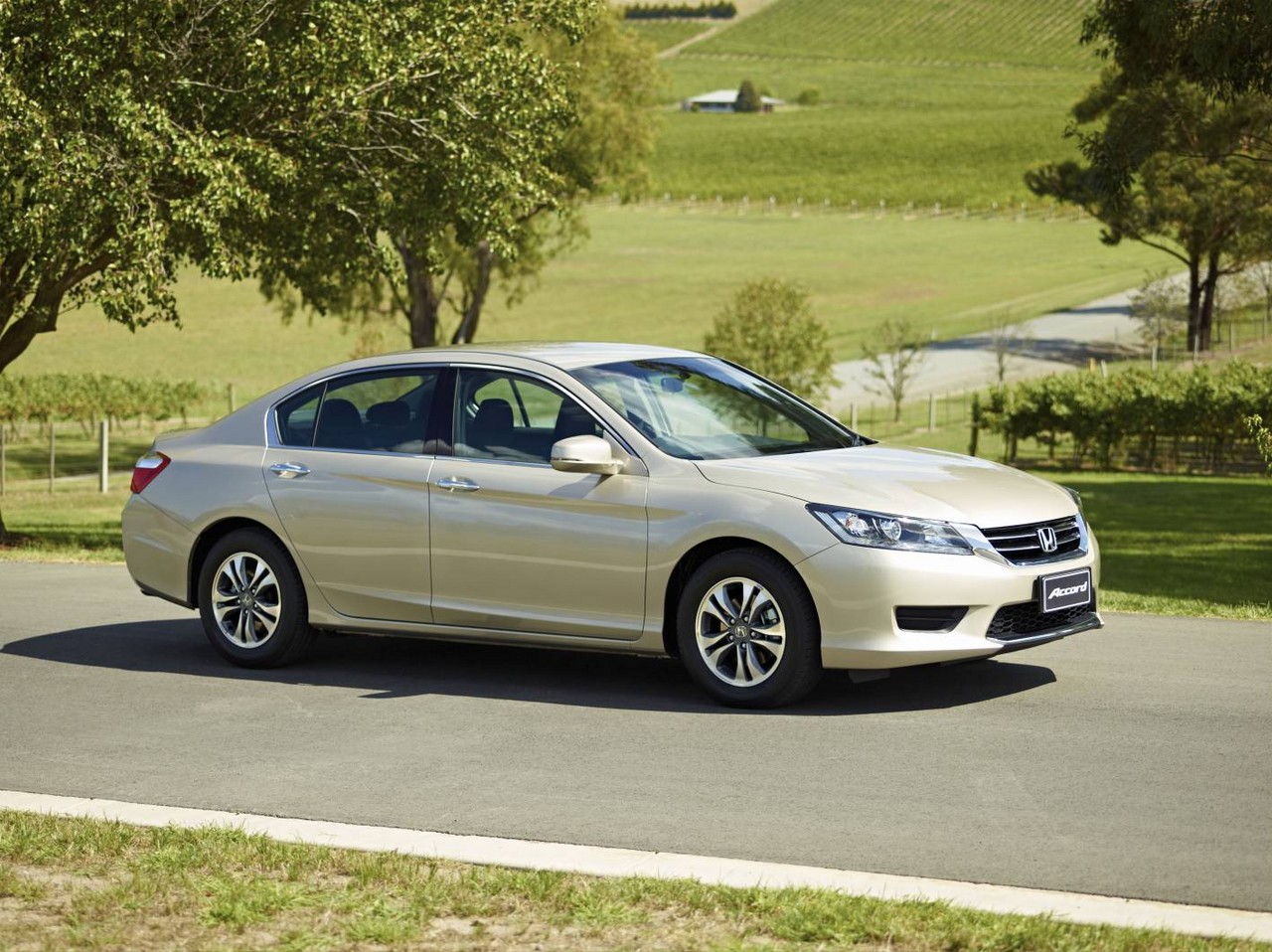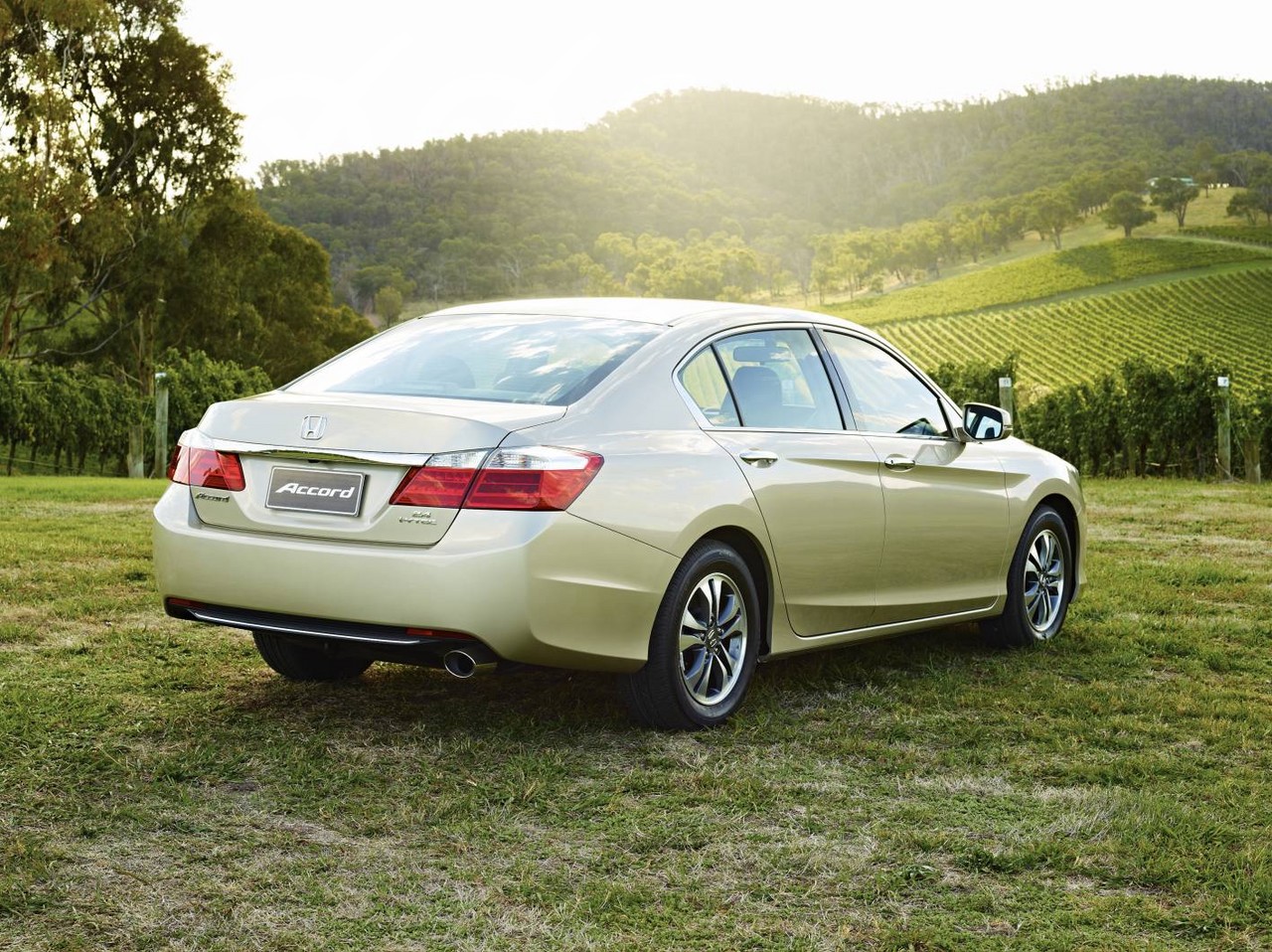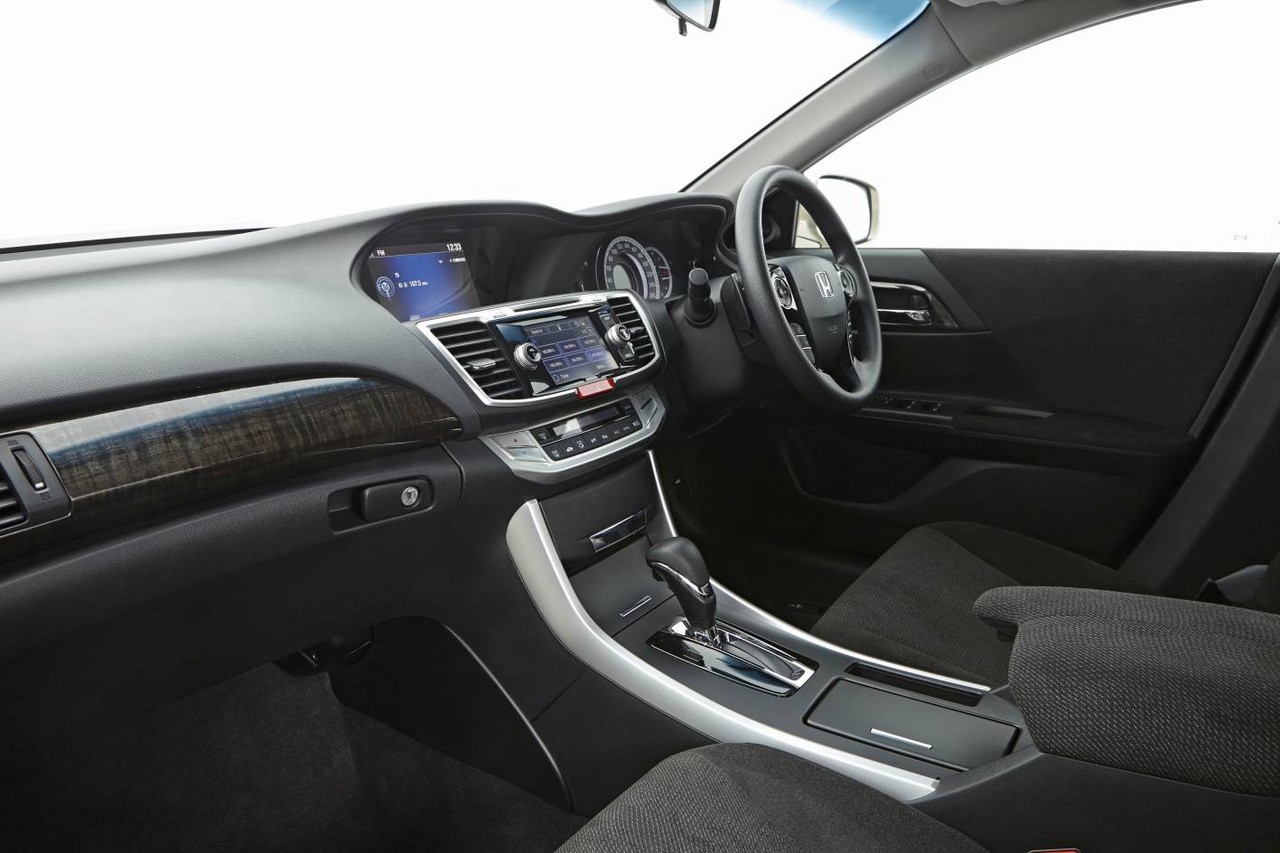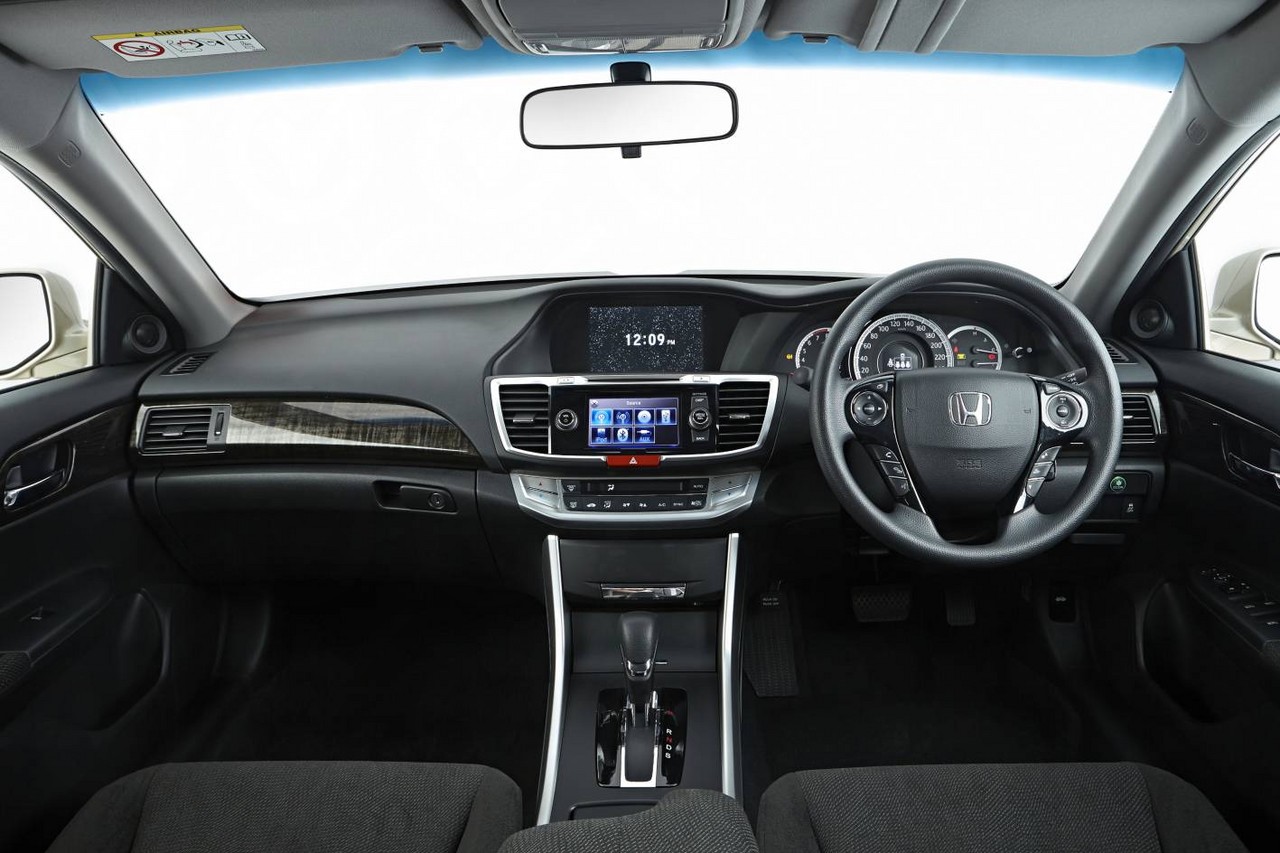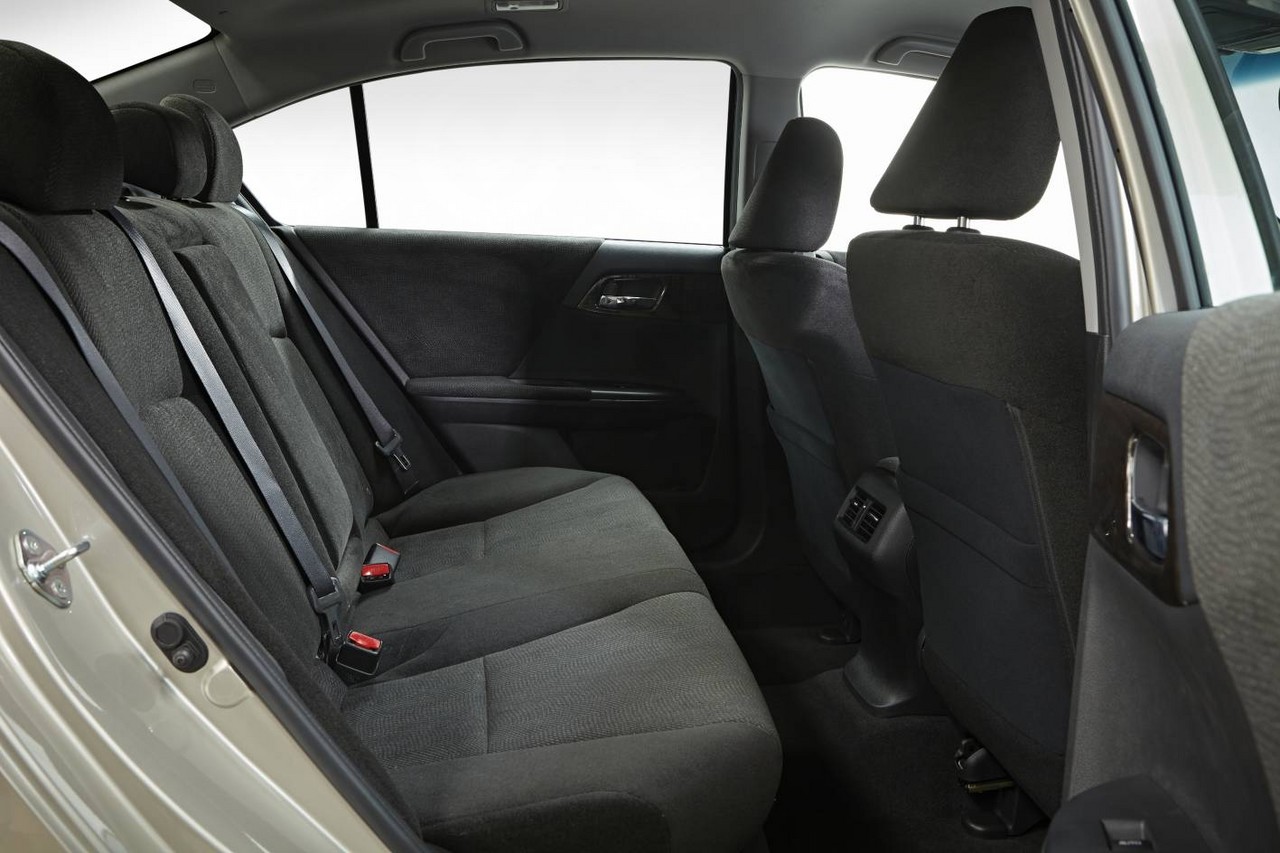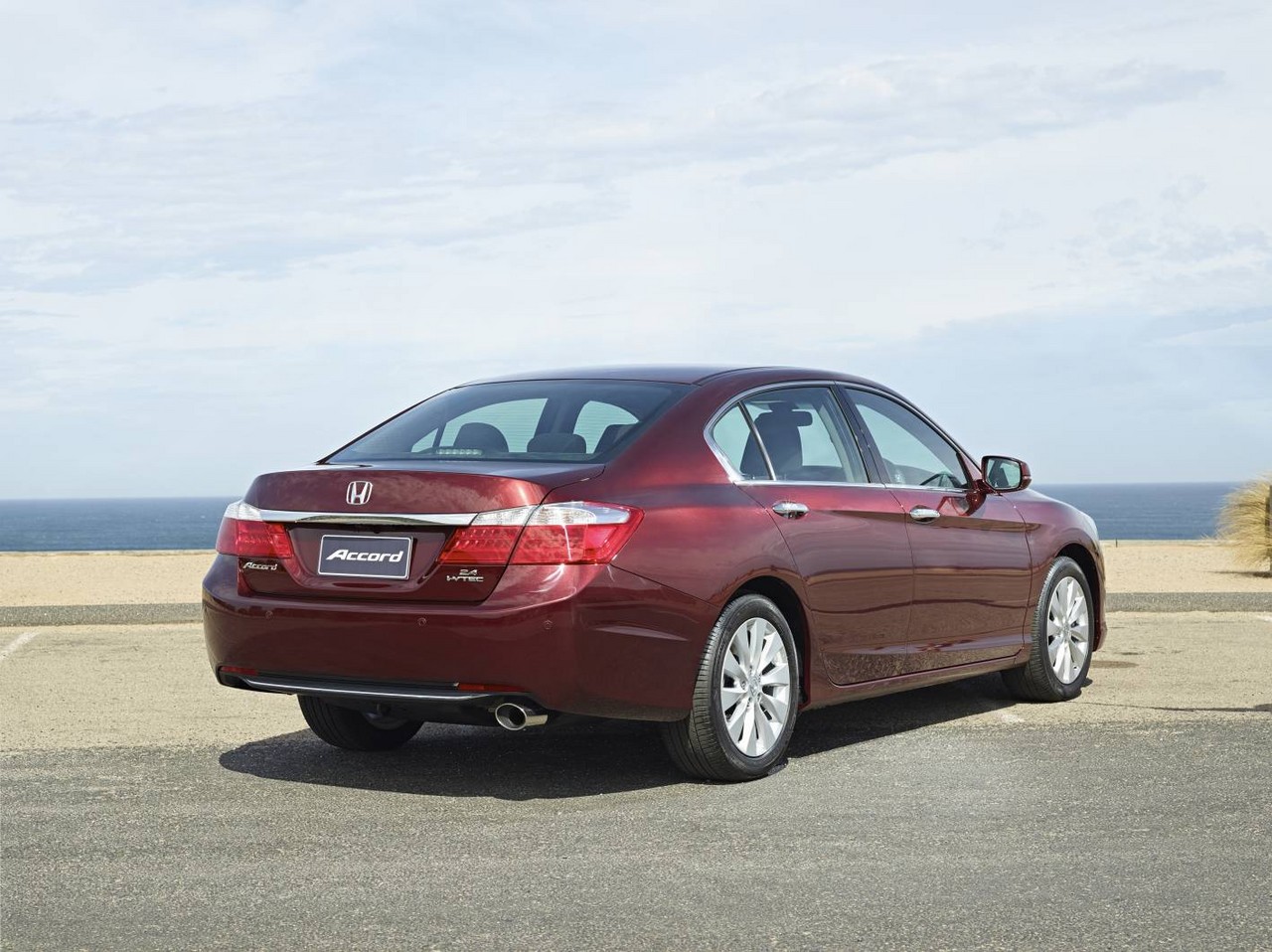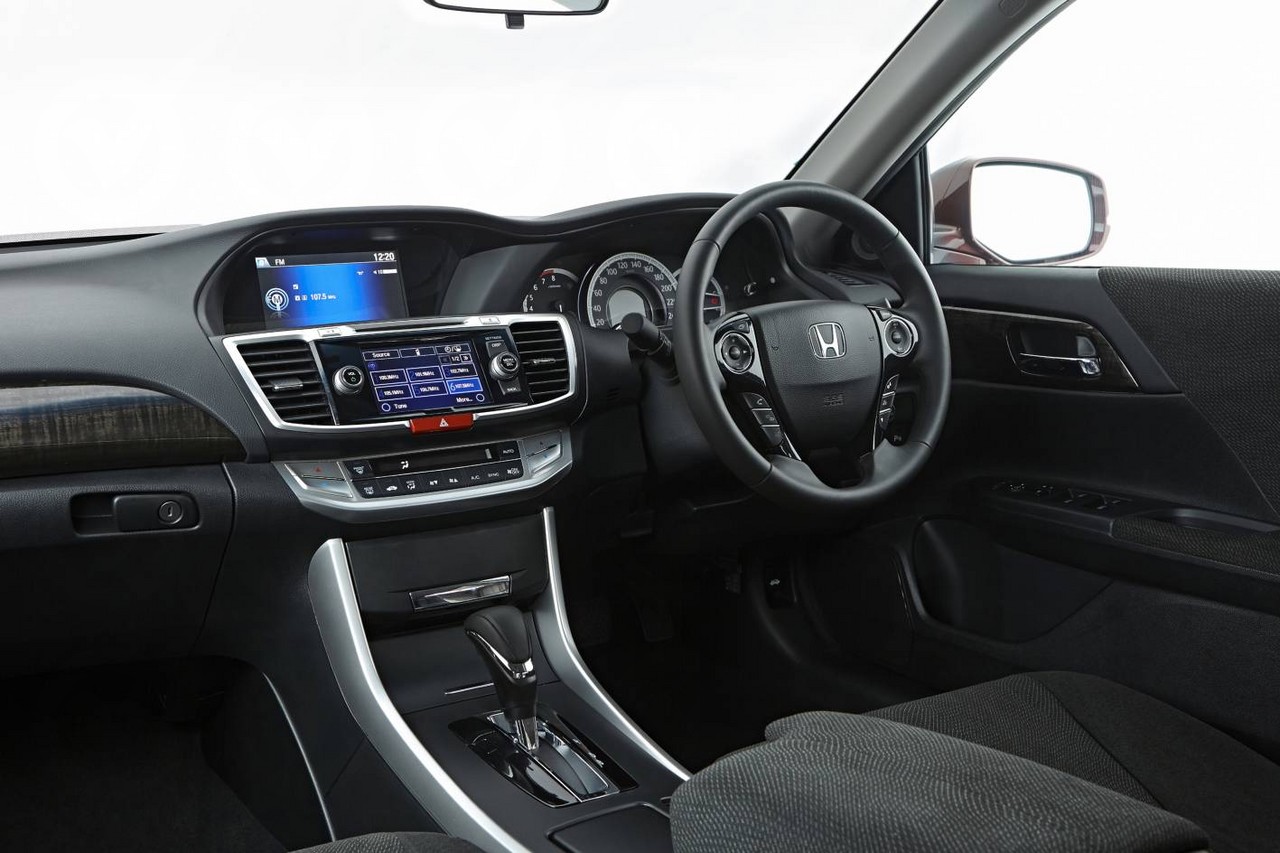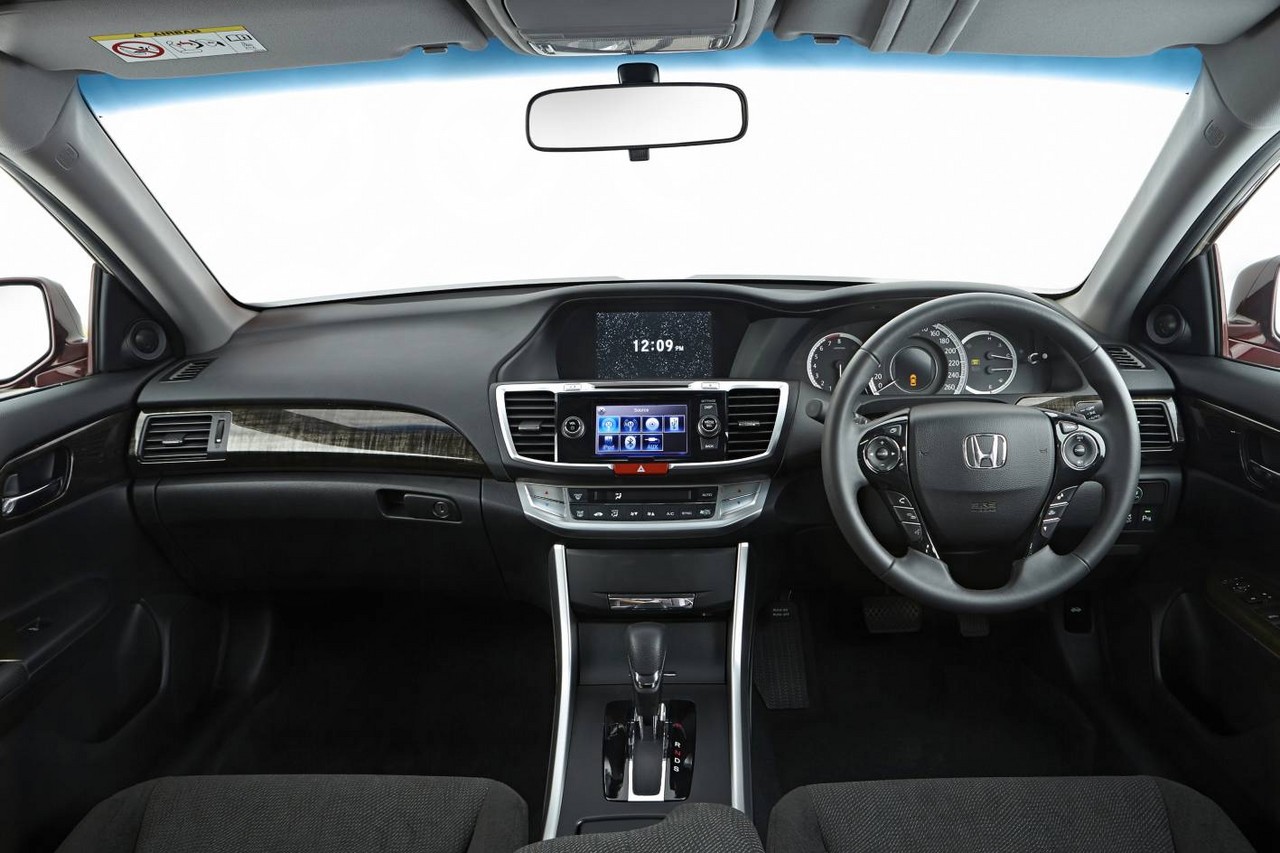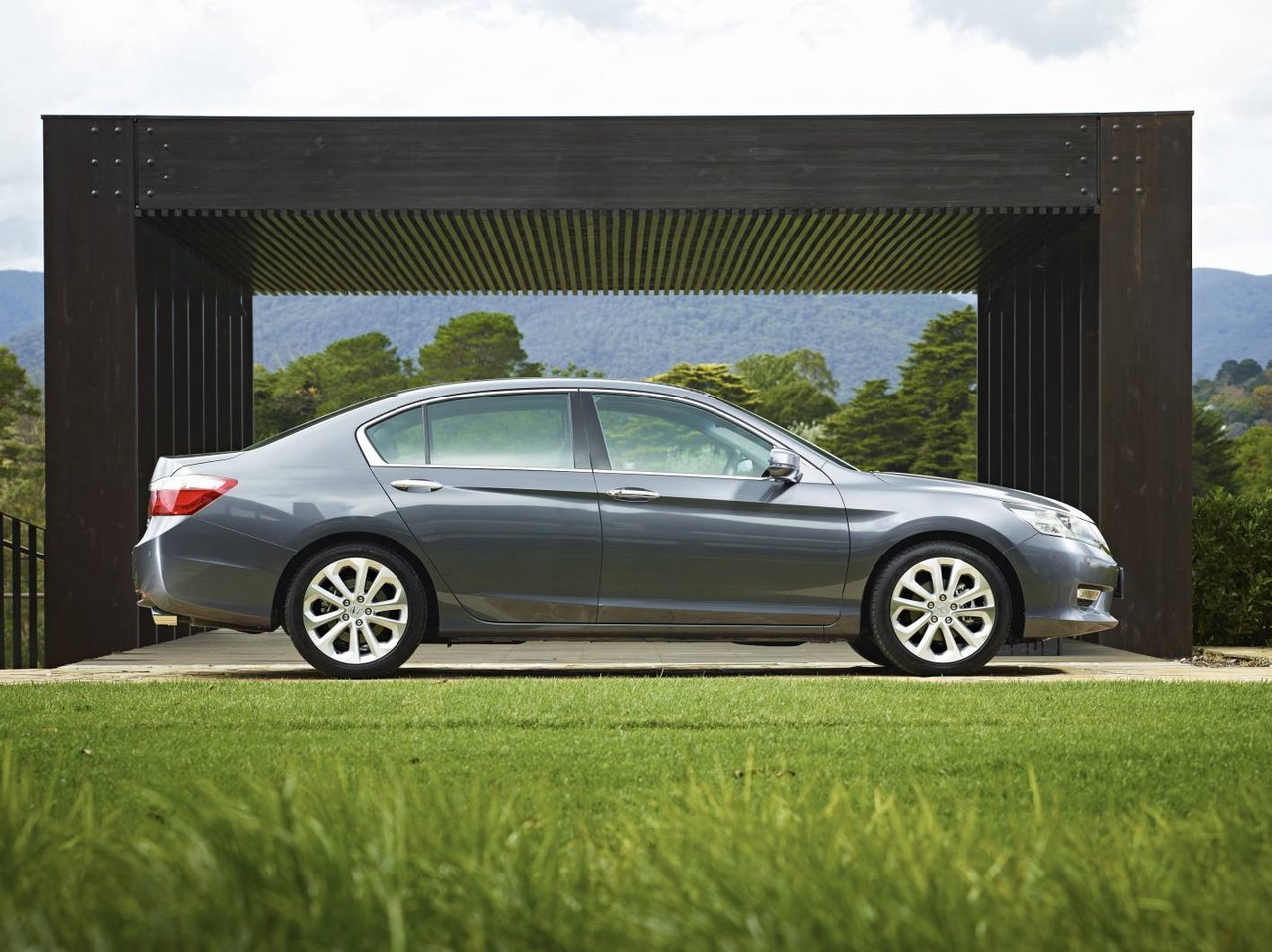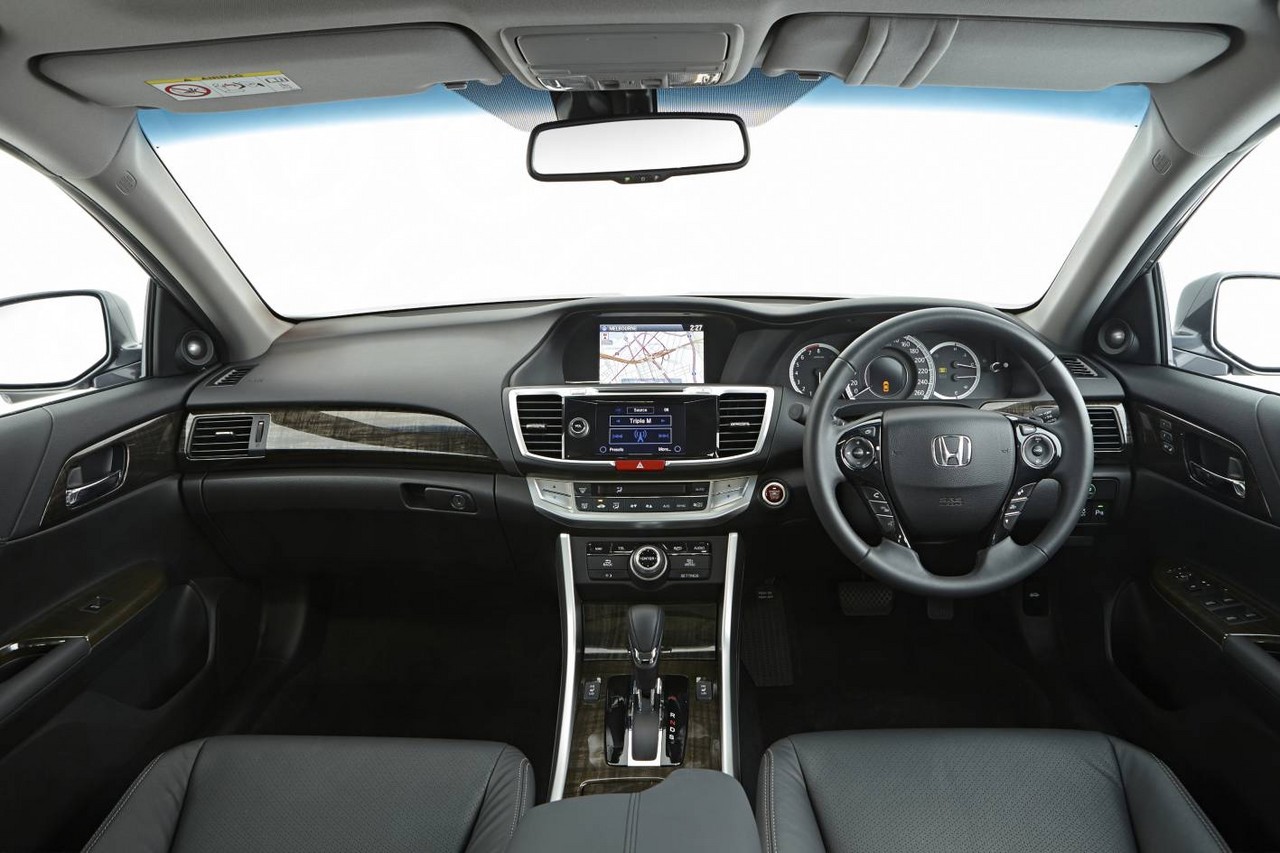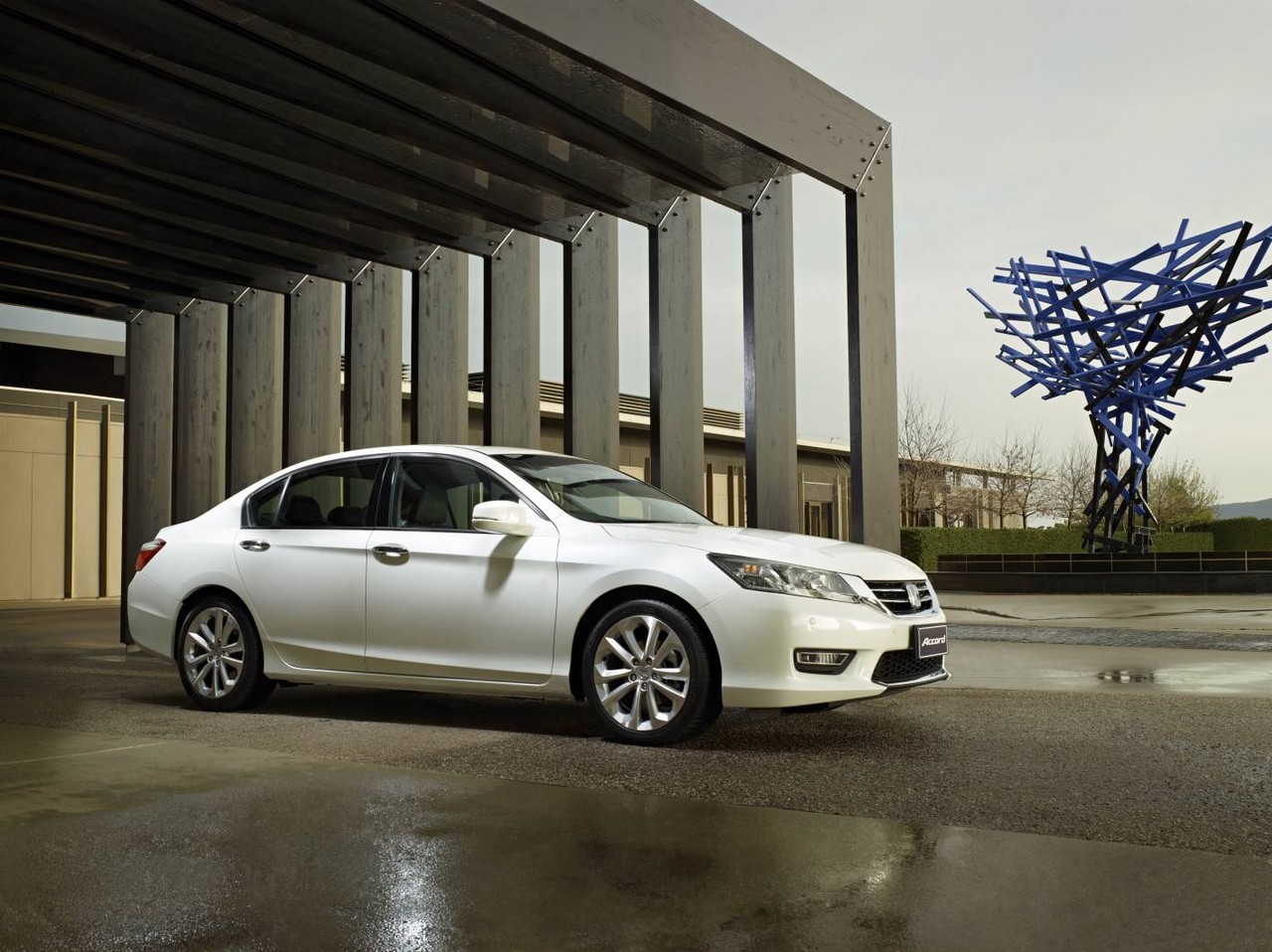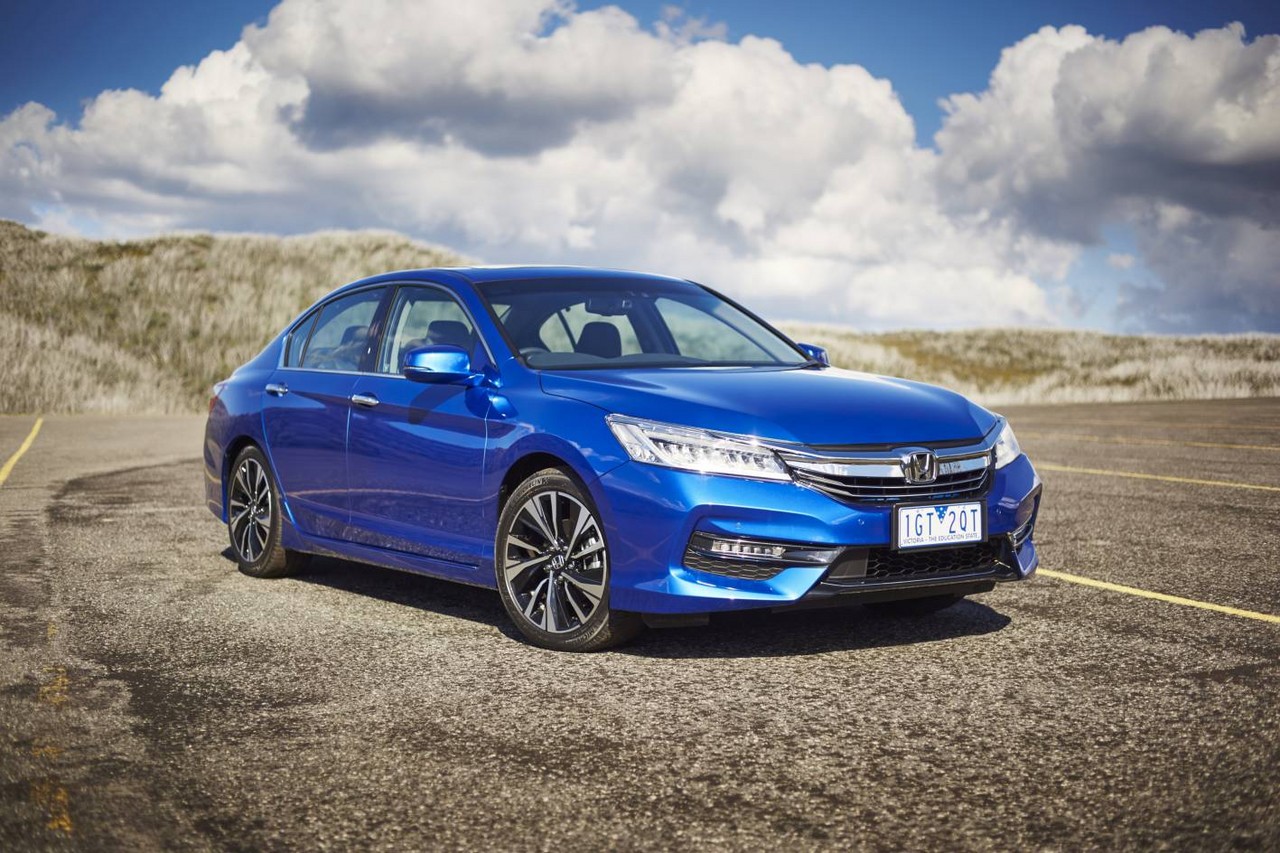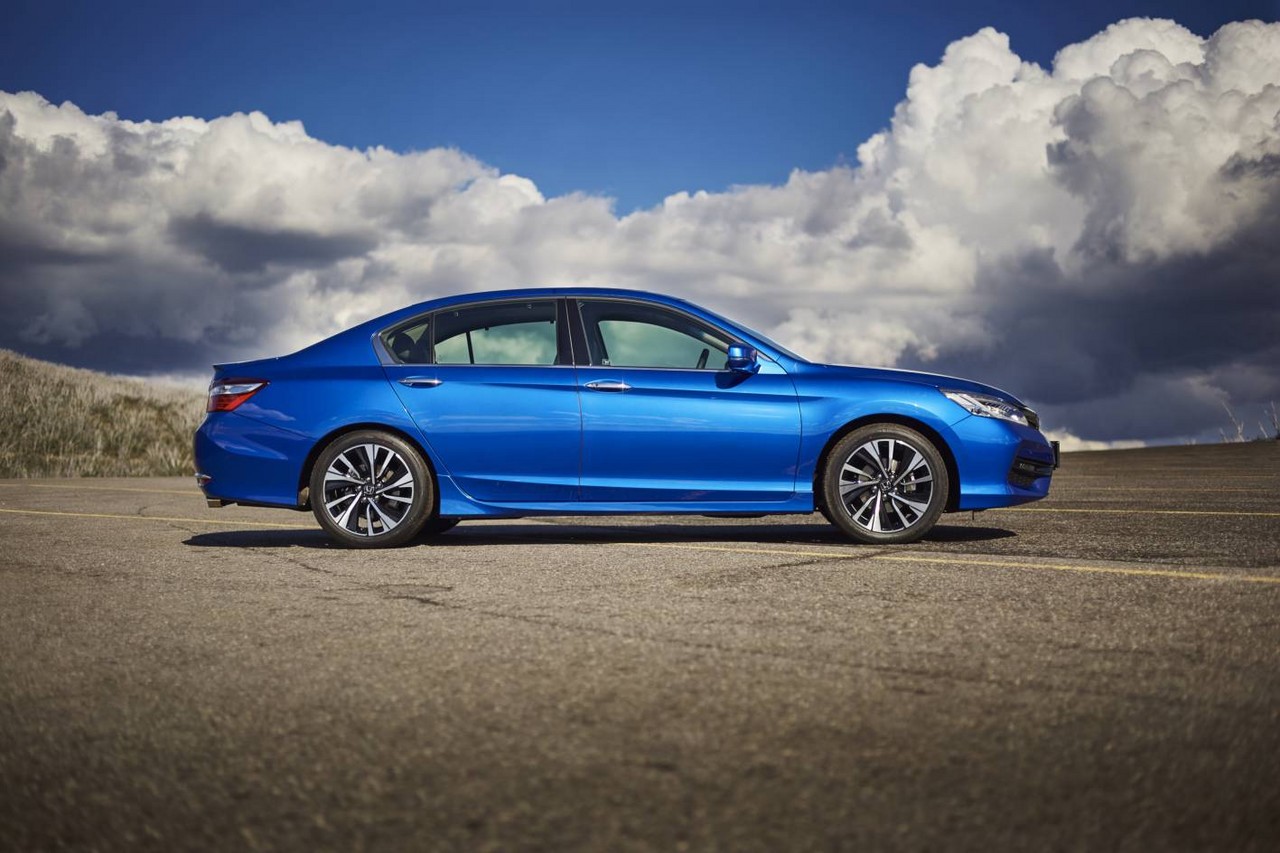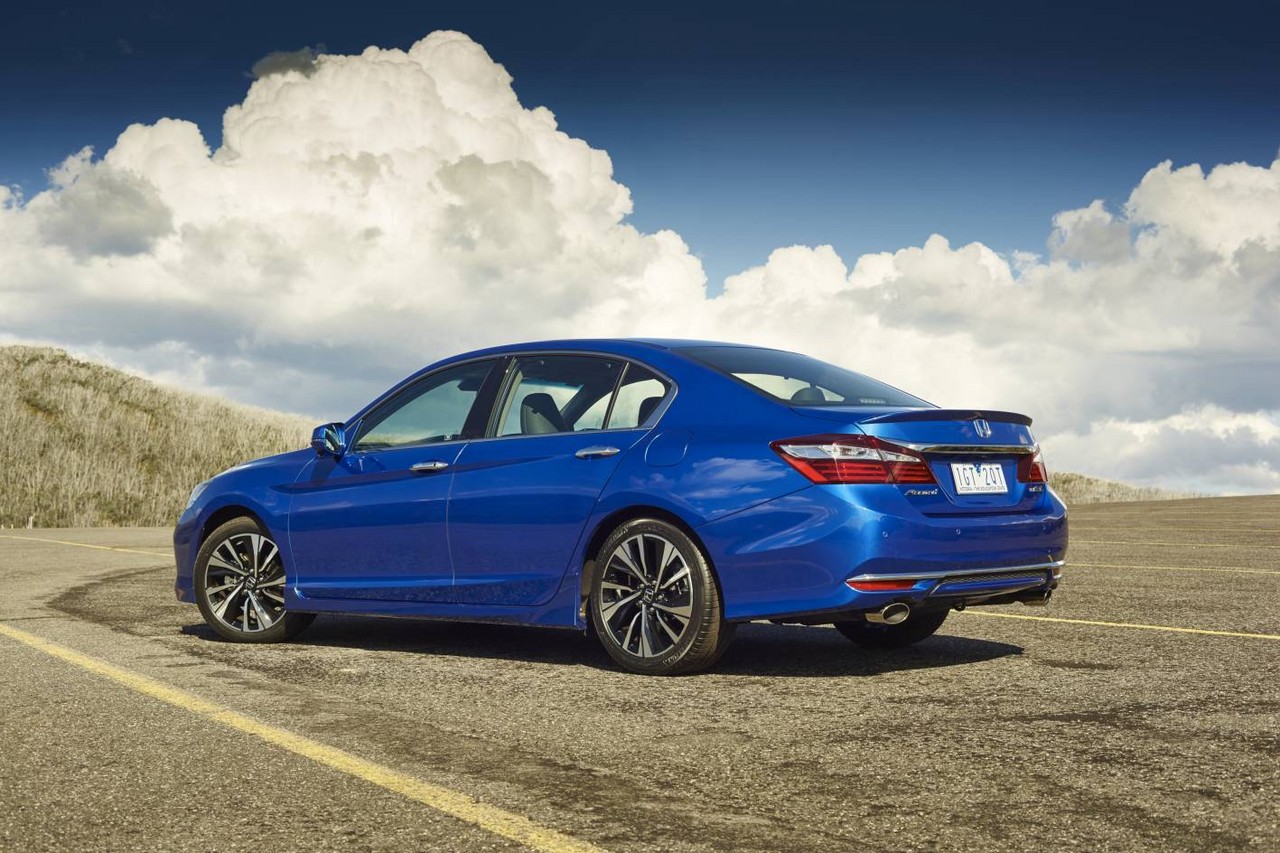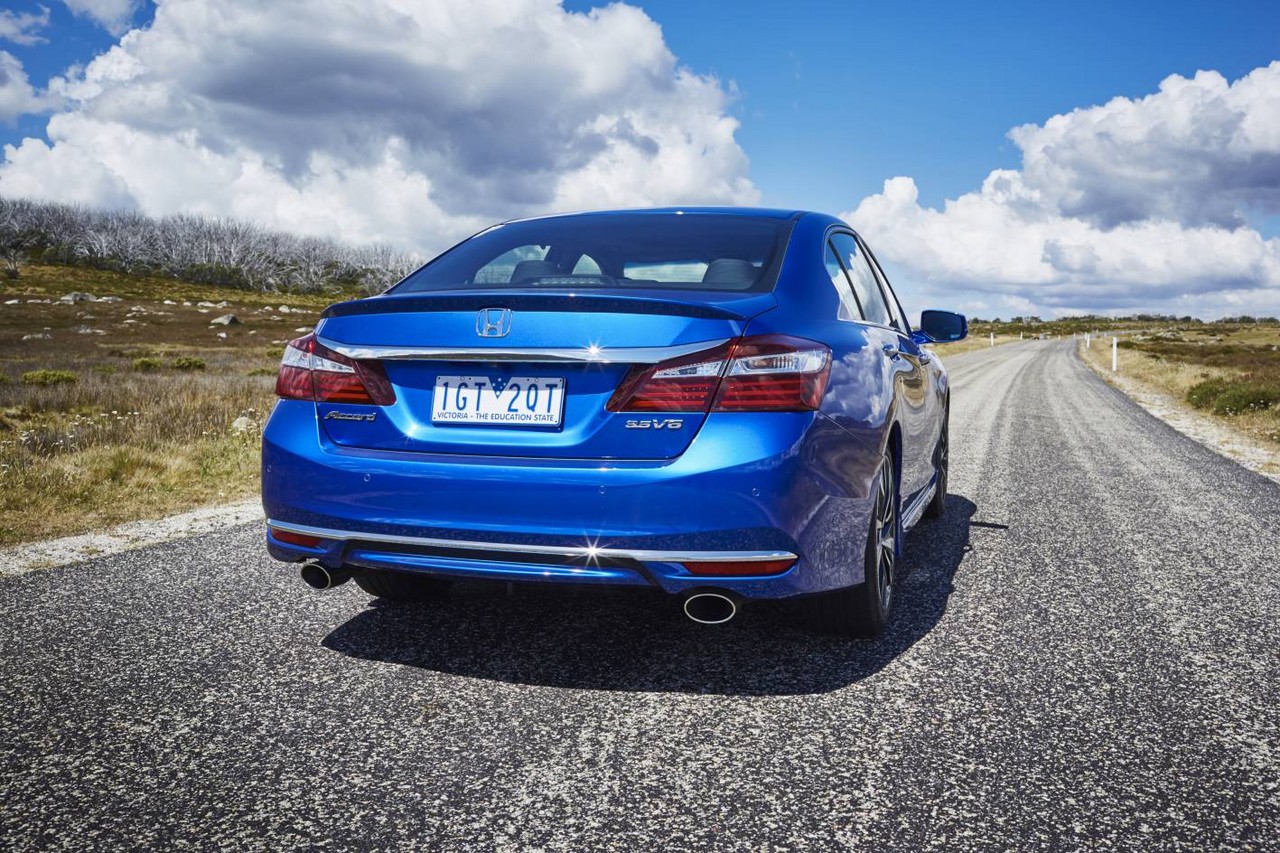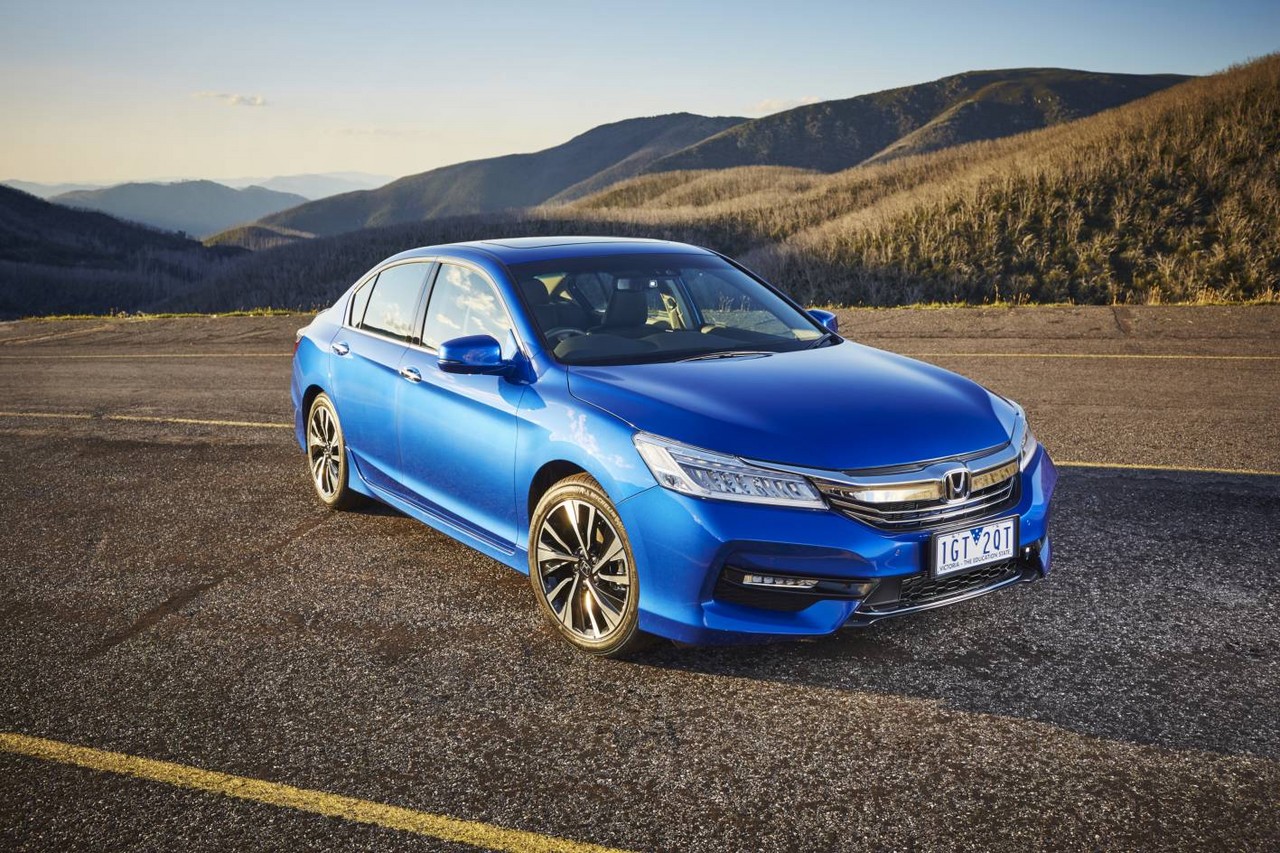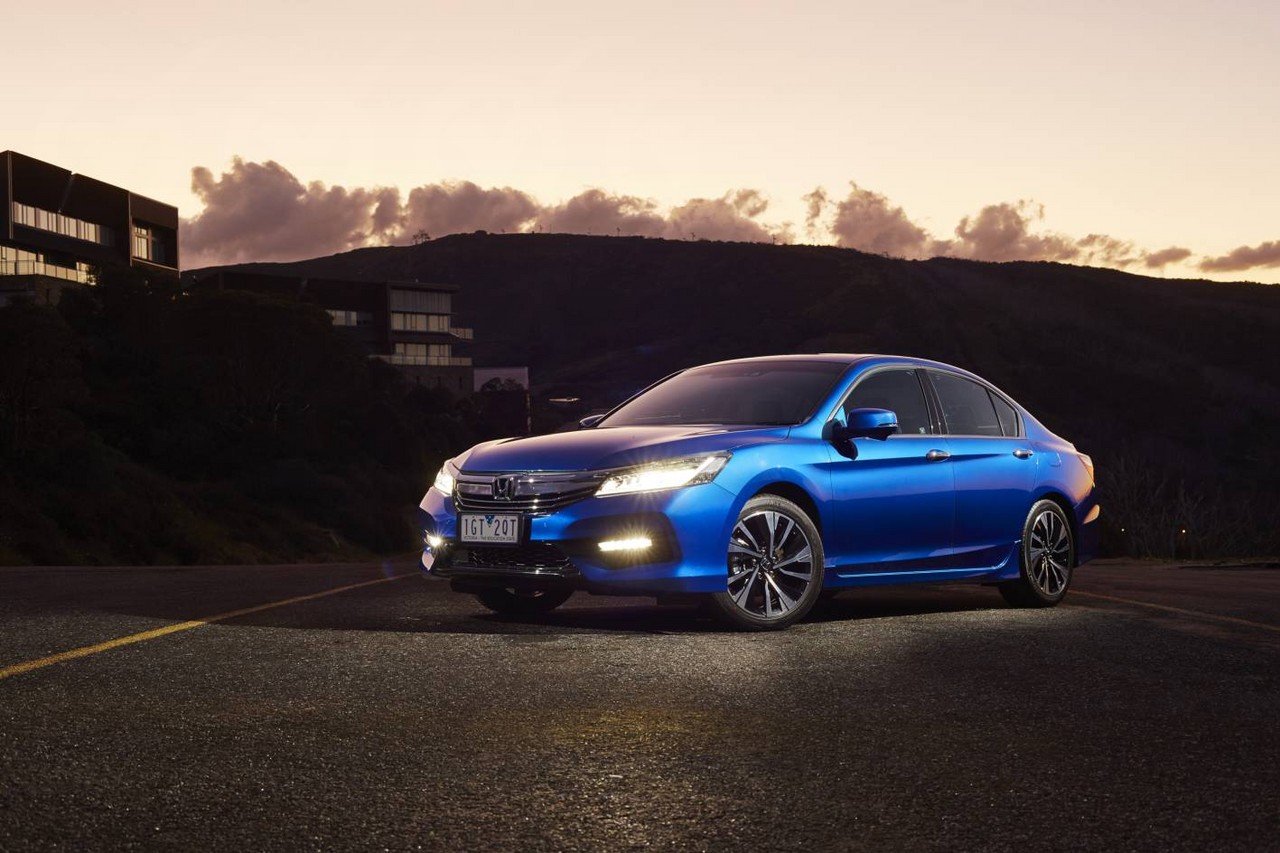
- Refined V6 engine and six-speed automatic transmission
- Quiet, well-insulated cabin
- Competent ride/handling balance
- Light, overly-assisted steering lacks feedback
- For 2.4-litre petrol engine, five-speed automatic transmission lacks ratios
- Rear seat doesn’t fold
Review: Honda CR2.I/CR3.I Accord (2013-16)
Overview
Released in Australia in May 2013, the ninth generation Honda Accord was a mid-size, front-wheel drive sedan. Manufactured in Ayutthaya, Thailand, the CR2 Accord was powered by 2.4-litre four-cylinder petrol engine, while the CR3 Accord had a 3.5-litre V6 petrol engine. As per the table below, the 2.4- and 3.5-litre petrol engines were mated to five- and six-speed automatic transmissions, respectively.
K24W3 and J35Y3 engines
The 2.4-litre K24W3 four-cylinder engine had a die-cast aluminium block, pressure-cast aluminium alloy cylinder head, double overhead camshafts, four valves per cylinder and a compression ratio of 10.1:1. The engine also featured Honda’s i-VTEC (intelligent Variable Valve Timing and Lift Electronic Control) system which consisted of:
- VTEC system which changed valve lift, timing and duration of the intake valves for low- and high- rpm (i.e. above 5000 rpm) profiles; and,
- Variable Timing Control (VTC) which continuously adjusted the intake camshaft phase.
The 3.5-litre J35Y3 V6 engine had a die-cast aluminium block, single overhead camshaft (per cylinder bank), four valves per cylinder, VTEC and a compression ratio of 10.5:1. Furthermore, a fuel-saving Variable Cylinder Management (VCM) system enabled the engine to run on three cylinders when the vehicle was cruising, four cylinders for modest acceleration and six cylinders for strong acceleration.
| Variant | Engine | Trans. | Peak power | Peak torque |
|---|---|---|---|---|
| VTi, VTi-S, VTi-L, VTi-L (ADAS) |
2.4-litre K24W3 petrol I4 | 5sp auto | 129 kW at 6200 rpm | 225 Nm at 4000 rpm |
| V6L | 3.5-litre J35Y3 petrol V6 | 6sp auto | 206 kW at 6200 rpm | 339 Nm at 4900 rpm |
Dimensions and body
Compared to the Honda CP2/CP3 Accord , the CR2/CR3 Accord was 75 mm shorter (at 4885 mm), 5 mm wider (1850 mm), 10 mm lower (1465 mm) and had a 25 mm shorter wheelbase (2775 mm). Despite the smaller dimensions, Honda claimed that interior dimensions such as rear legroom and boot space increased (the latter measuring 461 litres and 457 litres for VTi and non-VTi variants, respectively). Furthermore, the CR2/CR3 Accord chassis had a higher proportion of high strength steel (55.8 per cent), such that bending rigidity increased by 34 per cent and torsional rigidity by 42 per cent.
Active Noise Control
The CR2/CR3 Accord was fitted with Honda’s Active Noise Control (ANC) and Active Sound Control (ASC) systems which utilised dual overhead microphones and four door-mounted speakers. Specifically,
- ANC reduced low frequency sounds in the cabin caused by the roughness of the road surface by emitting reverse phase audio signals; and,
- ASC made changes in the volume of engine noise more linear by creating same-phase or reverse-phase audio signals.
Steering and suspension
The CR2/CR3 Accord had electric power-assisted steering, MacPherson strut front suspension (formerly double wishbones for the CP2/CP3 Accord ) and independent, multi-link rear suspension with the lower links connected to a rear subframe.
Safety equipment
Standard safety equipment for the Honda CR2/CR3 Accord included dual front airbags, front side airbags, full-length curtain airbags, ABS, electronic brakeforce distribution brake assist, electronic stability control, traction control, active front seat head restraints and front seatbelts with pre-tensioners and load limiters.
The Accord VTi-S, VTi-L, V6L were also fitted with Honda’s ‘LaneWatch’ system which used a camera to increase the view of the passenger-side mirror by up to 80 degrees, with the camera output visible on the multi-information display. Furthermore, Honda’s Advanced Driver Assist System (ADAS) was available as an extra-cost option for the VTi-L variant and fitted as standard for V6L – it included:
- Forward Collision Warning (FCW) and Collision Mitigation Braking System (CMBS): operating at speeds above 15 km/h, FCW and CMBS used millimetre-wave radar and a camera located in the windscreen to monitor the road up to 100 metres ahead. If FCW detected that there was a collision risk with the vehicle ahead, a ‘Brake’ warning would flash in the Multi-Information Display and an audible warning would sound. In its second stage, CMBS would apply light braking to reduce vehicle speed and gently retract the driver’s seatbelt to alert the driver. In its final stage when a collision was assessed to be inevitable, CMBS would apply maximum braking force to reduce vehicle speed and the severity of the collision;
- Lane Keep Assist System (LKAS): used a camera to detect if the vehicle was departing from its lane without indicating and would automatically apply corrective steering inputs while issuing visual and audible warnings;
- Adaptive Cruise Control (ACC): enabled the vehicle to maintain a specified distance from the vehicle ahead and could apply up to a quarter of the maximum braking force to slow the vehicle; and,
- An E-Pretensioner for the driver’s seatbelt.
ANCAP crash testing
In ANCAP crash testing , the Honda CR2/CR3 Accord received a four star adult occupant protection rating with a score of 29.21 out of 37. In the front offset crash test, protection for the driver’s chest and feet were rated as acceptable, though lower leg protection was marginal. In the side impact test, maximum points were awarded. Since the Accord’s performance in the front offset and side impact tests rendered it ineligible for a five star rating, the pole test – which could have earned an additional two points – was not conducted.
In subsequent testing of post-August 2014 Accords, ANCAP conferred a five star rating with a score of 35.79. For the post-August 2014 Accords, protection of the driver’s legs was rated as adequate in the frontal offset crash test and protection of the front passenger’s chest improved to ‘good’. An extra point was also awarded for rear seatbelt reminders.
Features: Accord VTi, VTi-S and VTi-L
Standard features for the Honda Accord VTi included 16-inch alloy wheels with 215/60 R16 95H tyres (and a full-size spare), a 160 watt sound system with four speakers and two tweeters, a CD player, MP3/WMA compatibilty, auxiliary inputs (3.5 mm/USB/iPod) and Bluetooth connectivity, dual-zone climate control air conditioning, cruise control, daytime LED running lights, a reversing camera (with three modes and an eight-inch display), steering wheel audio controls, remote central locking, power windows and mirrors, tilt and telescopic steering wheel adjustment, two 12 volt power outlets, an alarm and immobiliser.
The Accord VTi-S was further equipped with 17-inch alloy wheels with 225/50 R17 94V tyres, a seven speaker sound system (including a subwoofer) with touch screen, LED projector headlights, front fog lights, front and rear parking sensors, rain-sensing wipers and a reverse tilt door mirror.
Beyond this, the Accord VTi-L added 18-inch alloy wheels with 235/45 R18 98W tyres, HDD satellite navigation with an eight-inch display, leather seat trim, an eight-way power adjustable driver’s seat (with memory settings), a four-way power adjustable front passenger seat, heated front seats, directional headlights, a leather-wrapped steering wheel and gearshift, keyless entry and start, a sunroof and an electrochromatic rear view mirror.
Features: Accord V6L
The range-topping Honda Accord V6L was distinguished by its eight-way power front passenger seat, water-repellent door mirrors and powered rear sun blind.
Brochure
Related links
Review: Honda CR2 and CR3 Accord (2016-19)
Overview
Series II versions of the Honda CR2 and CR3 Accord (CR2.II and CR3.II) were released in Australia in May 2016. Although drivetrains were unchanged, standard features were extended to include Honda’s ‘LaneWatch’ system and ‘Advanced Display Audio’ infotainment package. The CR2.II and CR3.II Accord could be identified by its new front mask with ‘solid wing face’ grille, new headlights and bumpers.
From 1 July 2017, the Honda CR2/CR3 Accord was sold with a five year, unlimited kilometre warranty; if the vehicle was used for commercial purposes, however, the warranty was limited to five years or 140,000 kilometres, whichever came first.
| Variant | Engine | Trans. | Peak power | Peak torque |
|---|---|---|---|---|
| VTi, VTi-L |
2.4-litre K24W3 petrol I4 | 5sp auto | 129 kW at 6200 rpm | 225 Nm at 4000 rpm |
| V6L | 3.5-litre J35Y3 petrol V6 | 6sp auto | 206 kW at 6200 rpm | 339 Nm at 4900 rpm |
Safety equipment
Compared to the CR2.I Accord VTi, standard safety equipment for the Honda Accord VTi was extended to include Honda’s ‘LaneWatch’ system which used a camera to increase the view of the passenger-side mirror by up to 80 degrees, with the camera output visible on the multi-information display.
As standard, the Honda CR2.II Accord VTi-L and CR3.II Accord V6L were further equipped with:
- Forward Collision Warning (FCW) and Collision Mitigation Braking System (CMBS): operating at speeds above 15 km/h, FCW and CMBS used millimetre-wave radar and a camera located in the windscreen to monitor the road up to 100 metres ahead. If FCW detected that there was a collision risk with the vehicle ahead, a ‘Brake’ warning would flash in the Multi-Information Display and an audible warning would sound. In its second stage, CMBS would apply light braking to reduce vehicle speed and gently retract the driver’s seatbelt to alert the driver. In its final stage when a collision was assessed to be inevitable, CMBS would apply maximum braking force to reduce vehicle speed and the severity of the collision;
- Adaptive Cruise Control (ACC): enabled the vehicle to maintain a specified distance from the vehicle ahead and could apply up to a quarter of the maximum braking force to slow the vehicle;
- Lane Keep Assist System (LKAS): used a camera to detect if the vehicle was departing from its lane without indicating and would automatically apply corrective steering inputs (Road Departure Mitigation, RDM) while issuing visual and audible warnings; and,
- High-Beam Support System (HSS): operating at speeds above 40 km/h, HSS automatically switched between low beam and high beam headlights according to whether oncoming traffic was detected.
Features: Accord VTi
As standard, the Honda CR2.II Accord VTi was equipped with Honda’s ‘Advanced Display Audio’ system with a seven-inch colour touch screen, six speakers, Apple CarPlay, Android Auto, Bluetooth mobile phone connectivity and audio streaming, USB connectivity, and a multi-angle rear view camera with dynamic guidelines.
Other standard features for the Honda Accord VTi included 17-inch alloy wheels, black fabric seat trim, dual-zone climate control air conditioning, cruise control, daytime LED running lights, steering wheel audio controls, remote central locking, power mirrors and windows, tilt and telescopic steering wheel adjustment, 12 volt accessory outlet, illuminated vanity mirrors, tyre deflation warning system, an alarm and immobiliser.
Features: Accord VTi-L
Compared to the Accord VTi, the Accord VTi-L was further equipped with 18-inch alloy wheels, a 360 watt audio system with six speakers and subwoofer, integrated satellite navigation system with SUNA live traffic updates, leather seat trim, heated front seats, an eight-way power adjustable driver’s seat, a four-way power adjustable front passenger seat, directional LED headlights, LED front fog lights, dusk-sensing headlights, rain-sensing wipers, proximity key (i.e. keyless entry), an auto-dimming rear view mirror, push-button start, a powered rear window sunshade, manual rear side window sunshades.
Features: Accord V6L
The range-topping Accord V6L was distinguished by its eight-way power adjustable front passenger system and hydrophilic door mirrors. Visual cues for the Accord V6L included its rear lip spoiler and twin chrome exhaust.
Brochure
Related links
